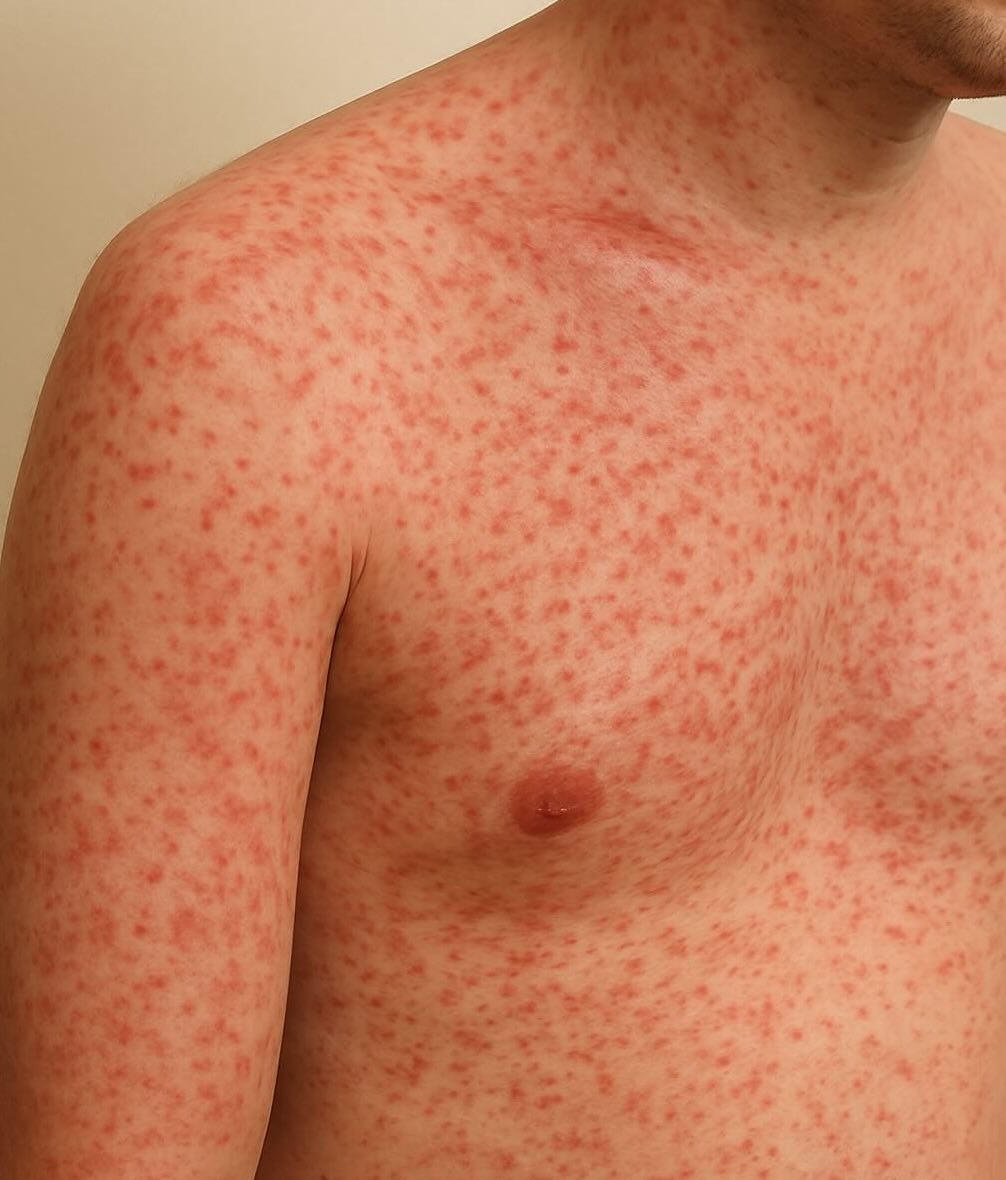Is It an Allergy or Dengue? A Dermatologist’s Guide to Understanding the Dengue Rash
As the monsoon season settles over Nepal, we see a familiar rise in fever cases. With it comes a common, and often alarming, symptom: a skin rash. Many patients walk into our clinic, worried they are having a severe allergic reaction. While the appearance can be deceiving, this rash is often a tell-tale sign of Dengue fever.
In our clinical practice at Derma Clinic, differentiating between a simple allergic rash and a systemic viral illness like Dengue is a critical first step. Misinterpreting the signs can delay proper management. Let’s break down what this “Dengue rash” really is and why it demands professional attention.
The Great Mimicker: Why a Dengue Rash Looks Like an Allergy
The confusion is understandable. The rash associated with Dengue can be intensely itchy (a condition we call pruritus), red, and widespread, much like a classic allergic reaction (urticaria). However, the underlying cause is vastly different.
A Dengue rash is not an allergy. It is a viral exanthem. This medical term simply means it’s a rash caused directly by the body’s immune response to the Dengue virus. As your immune system fights the infection, it releases various chemicals that cause blood vessels in the skin to dilate and become leaky, resulting in the characteristic rash.
The Two Phases of the Dengue Rash: What to Look For
The Dengue rash typically appears in two distinct phases. Recognizing them can be key to early suspicion.
- The Early Rash (First 1-2 Days): This initial rash appears with the onset of high fever. It presents as a diffuse flushing or blanching erythema, meaning the skin turns red but whitens with pressure. It’s most common on the face, neck, and chest, often looking like a mild sunburn. This phase is subtle and can be easily missed or dismissed.
- The Critical Phase Rash (Appearing from Day 3 to 6): This is the more dramatic and well-known rash. It often appears as the fever begins to subside, which can give a false sense of recovery. This is a crucial period that requires close monitoring. The rash is typically maculopapular, a mix of flat red spots (macules) and small, raised red bumps (papules).A classic description is “islands of white in a sea of red.” This means you’ll see patches of normal-looking skin (the white islands) surrounded by confluent red rash (the red sea). This rash usually starts on the torso and spreads to the limbs and can even involve the palms of your hands and the soles of your feet. It is this phase that is often accompanied by intense, sometimes unbearable, itching.More concerning is the appearance of petechiae. These are tiny, pin-prick red, brown, or purple spots that do not blanch (whiten) when you press on them. They are essentially tiny bruises caused by minor bleeding under the skin due to a drop in blood platelet counts. Their presence is a sign that the Dengue is affecting your body’s ability to clot blood.
Beyond the Skin: The Blood Tests That Tell the Real Story
A rash alone is not enough for a diagnosis. If we suspect Dengue, we immediately recommend blood tests to confirm the diagnosis and, more importantly, to assess the severity of the illness.
Here’s what we look for:
- Complete Blood Count (CBC): This is our most vital tool for monitoring a Dengue patient.
- Platelet Count (Thrombocytopenia): This is the hallmark of Dengue. A normal platelet count is between 150,000 to 450,000 per microliter of blood. In Dengue, this count drops significantly, often below 100,000. A severe drop is what leads to petechiae and increases the risk of serious bleeding. We monitor this count daily.
- White Blood Cell Count (Leukopenia): The virus often suppresses the bone marrow, leading to a drop in white blood cells, our body’s infection-fighting cells.
- Hematocrit (Hemoconcentration): This measures the proportion of red blood cells in your blood. In severe Dengue, plasma can leak from the blood vessels, making the blood more concentrated and causing the hematocrit level to rise. This is a critical warning sign for Dengue Hemorrhagic Fever or Dengue Shock Syndrome.
- Dengue-Specific Tests:
- Dengue NS1 Antigen Test: This test detects a protein from the Dengue virus and is very effective for diagnosing the infection in the first few days of fever.
- Dengue IgM & IgG Antibodies: These are antibodies your body produces to fight the virus. The IgM antibody appears after about 4-5 days of illness and indicates a current or recent infection.
Don’t Guess, Get Assessed: Your Health is Our Priority
During Dengue season in Nepal, any fever accompanied by a rash should be taken seriously. Self-diagnosing it as a simple skin allergy or heat rash can lead to dangerous delays in treatment. The management of Dengue is primarily supportive, focusing on hydration and careful monitoring of blood parameters to prevent complications.
At Derma Clinic, we bridge the gap between dermatology and internal medicine. We are expertly trained to identify skin manifestations of systemic diseases like Dengue. We can provide an accurate, on-time diagnosis, initiate the necessary blood work, and guide you on the right course of management, including symptomatic relief for the distressing itch.
If you or a family member is experiencing a fever with a rash, muscle aches, or headache, please do not wait. Contact Derma Clinic at 9801358600 for a professional and timely evaluation. Your skin could be telling you something important about your overall health—we are here to listen.

